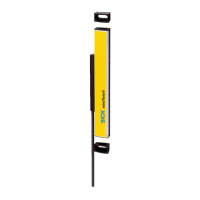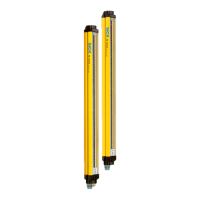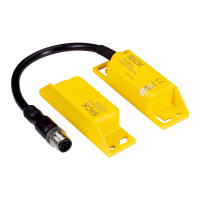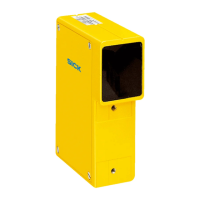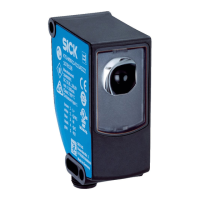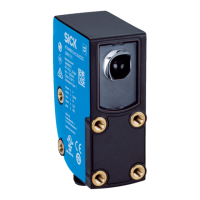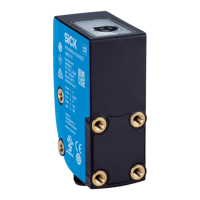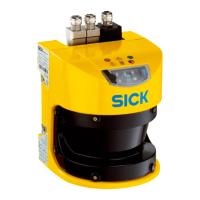DANGER
H
azard due to lack of effectiveness of the protective device
b
Switching of the monitoring case should be timed so that the safety laser scanner
detects a person in the protective field with a sufficient minimum distance, before
the dangerous state occurs.
DANGER
H
azard due to lack of effectiveness of the protective device
Persons or parts of the body to be protected may not be recognized or not recognized in
time in case of non-observance.
In addition to the parameters considered below, the switching signal’s propagation
delay time up to the protective device also influences the switching duration. These
include the network cycle time and the processing time of a control, for example.
b
Take account of the switching signal’s propagation delay time up to the protective
device.
In some cases, the process of switching between monitoring cases takes so long that
t
he new monitoring case is not available inside the response time provided. This means
that it may not be possible to detect a person in the protective field in time. In cases
like this, you must start switching between monitoring cases earlier.
The following parameters influence the duration of the process:
•
The set input delay (see "Input delay ", page 106).
•
The processing time for the chosen input.
You calculate when to switch between monitoring cases as follows
1.
First calculate how long it takes to switch between monitoring cases:
t
CSR
= t
ID
+ t
I
where:
°
t
C
SR
= time required for switching between monitoring cases in milliseconds
(ms)
°
t
ID
=input delay for the control inputs in milliseconds (ms)
°
t
I
= processing time for the selected switching type in milliseconds (ms)
•
Switching signal via network: t
I
= 28 ms
2. Then calculate how much time is available in the response time for switching
between monitoring cases:
t
C
SA
= (n – n
CS
) × t
S
where:
°
t
C
SA
= time available for switching between monitoring cases in milliseconds
(ms)
°
n = set multiple sampling (default: n = 2)
°
n
CS
= multiple sampling after switching between monitoring cases (with set‐
ting Fast (presetting): n
CS
= 1, with setting Reliable: n
CS
= n – 1, with setting
User-defined: n
CS
≤ n – 1)
°
t
S
= scan cycle time (poss. incl. supplement due to interference protection) in
milliseconds (ms)
3. Then check whether there is enough time available for switching between monitor‐
ing cases:
°
If t
CSA
≥ t
CSR
: earlier start is not necessary.
°
If t
CSA
< t
CSR
: you must start switching between monitoring cases earlier. The
time advance t
CSP
required is: t
CSP
= t
CSR
– t
CSA
PROJECT PLANNING 4
8021913/15ZW/2019-11-14 | SICK O P E R A T I N G I N S T R U C T I O N S | microScan3 – EFI-pro
33
Subject to change without notice
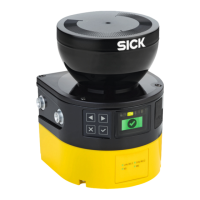
